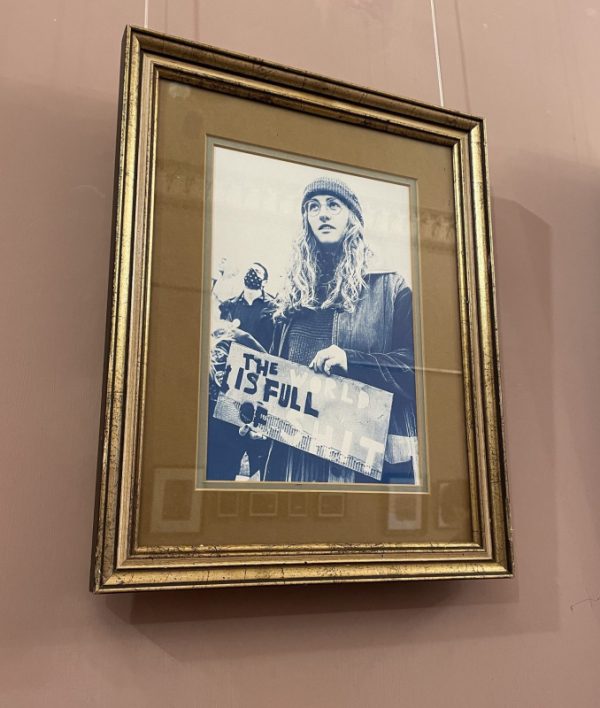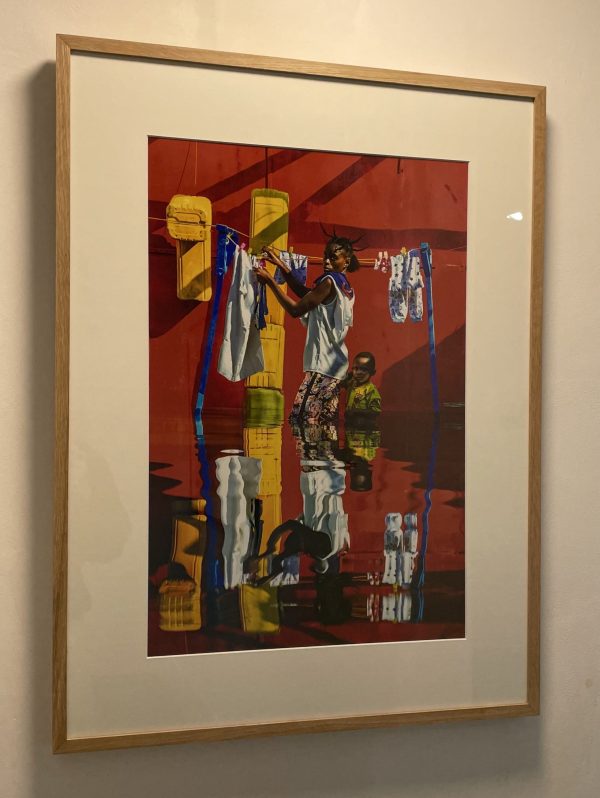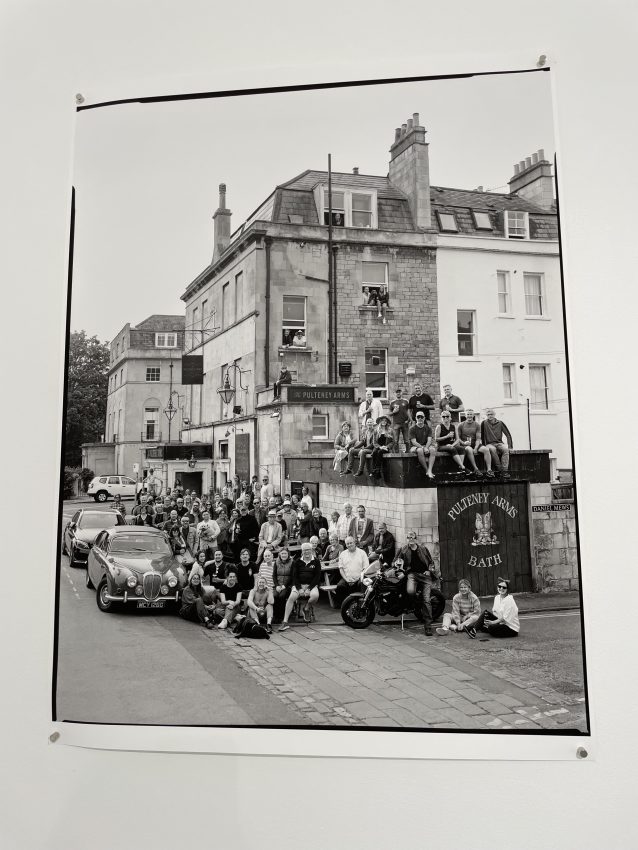“The function of art is to do more than tell it like it is – it is to imagine what is possible.” bell hooks
The theme for Photo Fringe’s 2022 edition was Real Utopias, welcoming exhibitors and audiences to seek how photography may help us envision a happier, greener, and more equitable society.
I had time to walk around Brighton and have a look at some of the exhibitions and the various interpretations of the theme. These ranged from more self-reflective interpretations to community based utopias reflecting on how our society shapes the environment we live in. Despite seeing lots of approaches, a few common themes seemed to pop up throughout most of the exhibitions I went to, giving me the hopeful impression that a lot of us care to fight for a shared better future together. I only managed to visit a handful of the many exhibitions, but here are some of my favourites from those that I did.
This Septic Isle: Tolly Robinson
In This Septic Isle, Tolly Robinson addresses the sewage waste that is illegally dumped in Brighton’s sea each year by Southern Water.

Robinson was able to effectively visualise the issue while also highlighting those working to find solutions. The exhibition displayed images of local climate activists on one side of the room along with photographs of the sea at Hove Beach, and black and white photographs of sewage outflow and a portrait of Lawrence Gosden, Chief Executive Officer of Southern Water, on the opposite side.
For all images the artist used an early photographic printing technique: using a lot of water while introducing small amounts of chemicals to the water system. This Victorian technique functions as a homage to a committee which formed in Victorian times to build a sewer running from Brighton to Portobello Wastewater Treatment Works at Telscombe Cliffs in hopes of reducing waste running directly into the sea. I found this a powerful parallel to a vision local people at the time had of creating less waste to the environment. This comes to show that the dream of real utopias has endured over time and it’s inspiring to see that activists are still determined to fight for the same purpose.
Le Ciel de Saison: Baudouin Mouanda (curated by Averil Curci)
Many contemporary artists are using their work to urgently shed light on the negative consequences of human behaviour in response to climate disaster. In Le Ciel de Saison, Mouanda tells tales that shake us out of our complacency and awaken our intrinsic sense of responsibility to protect and cherish the fragile earth we call home.

In order to highlight how incredibly vulnerable Africa is to environmental deterioration and major climatic catastrophes, the Congolese photographer Baudouin Mouanda decided to construct a startling mise-en-scène that speaks of the disastrous impacts of flooding. Due to the difficulty and risk involved in capturing the neighbourhoods during these downpours, Mouanda recreated the effects of these catastrophes in a flooded basement. Against backdrops painted in vibrant colours and with the help of Brazzaville locals who pose alongside their personal items, I believe the artist was able to create a beautiful photographic series inviting audiences to reflect on “worlds that are turned upside down”.
Pubtown: Jon Tonks (AION)
The four UK based artists that form AION produce art in a variety of styles and approaches, but are all drawn to discovering new worlds that frequently feel just out of reach. In particular I liked Jon Tonks’ photo series named Pubtown. After working in remote and isolated places around the world, the artist was driven by the desire to create work closer to home. The book “The Pub And The People”, by Mass Observation, a 1930s social study of an anonymous northern British town, served as the basis for Pubtown.

Despite the scenes of people at their local pub not representing a utopia as most would imagine one, I find that Tonks was able to capture the realness of what real utopias would be for me too, perfectly. For me, any vision of a better world simply couldn’t be created alone and wouldn’t be worth much if it couldn’t be shared with those around us. The past years have highlighted how important a sense of community is for me; that meeting up with friends in person at a pub shouldn’t be taken for granted and that meeting and exchanging ideas at a pub can lead to collective action bringing us one step closer to our real utopia.
For the Veil, Within the Veil, Without the Veil: Estabrak
Lastly but not least, I had the pleasure to be helping out at ONCA during the cross-disciplinary artist Estabrak’s time here. I was able to chat to the artist herself and get a beautiful insight into her exhibition For the Veil, Within the Veil, Without the Veil.

A variety of art work was exhibited in the gallery ranging from the underwater photography prints that Estabrak is well known for to glass sculptures, pieces using wood used as erosion control on local beaches, and pieces made of melting ice. Each piece had its own unique message; put together, the collection created a welcoming space inviting visitors to have open conversations on topics that aren’t always that easy to talk about under many ‘real world’ circumstances.
Estabrak talks about the many systems we live in which essentially form the world around us, and the fact that breaking out of these is not a given. Through the ‘Letters to Ummi’ (Ummi meaning my mother in Arabic), which could be seen throughout the exhibition, she was able to start conversations about her own identity on a personal level as well as what this means socially and politically.
Throughout the exhibition I found she was able to spark audiences to reflect on the very systems affecting them, while at the same time highlighting the fine line between beauty and danger that comes with breaking out of the norm and speaking up, each conversation bringing people closer to their ‘real utopias’.
___
Hana Mason is currently completing a work placement at ONCA as part of her MA studies at The University of Sussex.
Image credit 1 (featured image) & 3: photograph by Jon Tonks
Image credit 2: photograph by Tolly Robinson
Image credit 4: photograph by Estabrak
—
Share on Twitter /
Share on Facebook
Posted on November 25, 2022
Categories: O N C A Voles, Reviews
Tags: 2022, Brighton Photo Fringe, Exhibition Reviews, Hana Mason
→ We’re hiring! Seeking a Dresscue Support Artist
← Big changes at ONCA Gallery in 2023
